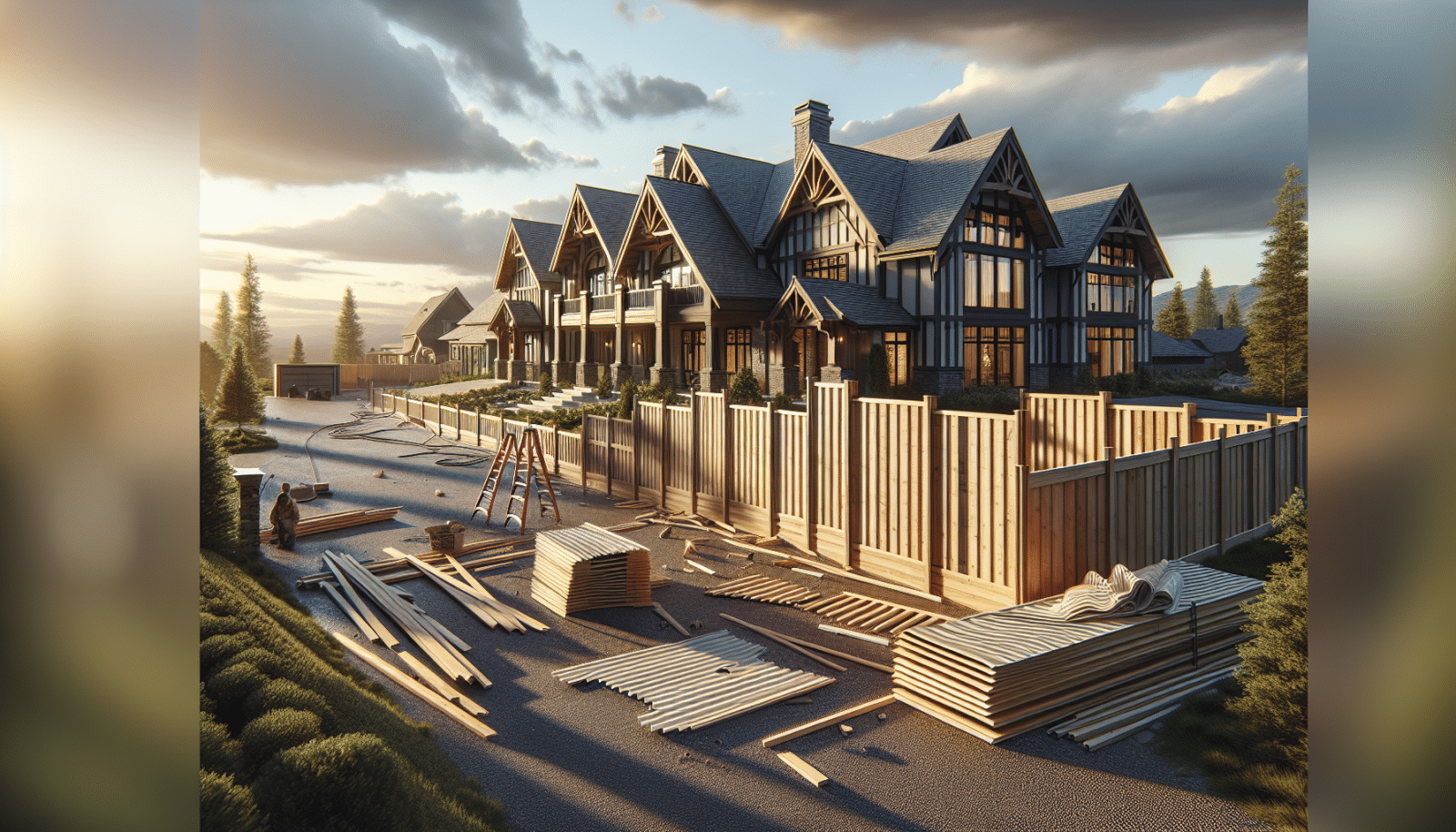Installing your own Vinyl privacy fence is an empowering DIY project that can significantly enhance the privacy and aesthetic appeal of your home. At Utah Fencing Company, we understand the value of a secure and stylish backyard. This comprehensive guide is designed to help homeowners like you undertake this project with confidence. Whether you’re a seasoned DIY enthusiast or a first-timer, we’ve got you covered from start to finish.
Planning Your Vinyl Privacy Fence Installation
Before you dive into the physical work, planning is a critical first step. Start by identifying the boundary lines of your property to ensure you place your fence correctly. Check with your local building authorities to see if you need a permit to install a fence. This will save you from potential legal headaches down the line. Additionally, discussing your plans with neighbors can help maintain good relationships and possibly share costs if the fence benefits them as well.
Next, decide on the height and style of your vinyl privacy fence. Consider how it will complement your home’s exterior and fulfill your privacy needs. Remember, the right fence can significantly increase your property’s curb appeal and value.
Gathering Your Materials and Tools
- Vinyl Fence Panels and Posts: These are the primary components of your fence. Ensure you have enough based on your measurements.
- Post Setting Material: Whether Concrete or gravel, this material is crucial for anchoring your posts.
- Measuring Tape and Level: Precision is key to a successful installation. These tools ensure your fence is evenly spaced and upright.
- String Line: This helps maintain a straight line along which to align your fence posts.
- Post Hole Digger: This tool makes excavating post holes easier and more efficient.
Remember to also gather general construction tools like a saw, drill, hammer, and safety equipment.
Marking the Fence Layout
Now, it’s time to mark where your fence will go. Use a string line to mark the boundary, ensuring it’s tight and straight. Place a stake at every corner and turn, and use spray paint or flags to mark where your posts will go. This visual guide is crucial for both digging post holes and ensuring your fence remains on your property.
Measure carefully between posts to ensure uniform spacing. For vinyl fences, spacing is crucial since panels and posts are pre-manufactured to fit together seamlessly. This step is foundational to achieving a professional-looking finish.
Digging Post Holes
Digging post holes is physically demanding but essential for a durable fence. For vinyl privacy fences, holes should be at least 2 feet deep and 10 inches in diameter, but be sure to check local building codes for specific requirements. A post hole digger or auger makes this job easier, ensuring your holes are the correct depth and width.
It’s vital to keep the bottom of the hole wider than the top to anchor the post securely. Tamping down a few inches of gravel at the bottom of each hole can aid in drainage and prevent water from pooling, which could lead to post issues down the road.
Setting the Posts
Setting posts is where your fence starts to take shape. Place each post in its hole and use a level to ensure it’s straight. Mix your concrete according to the manufacturer’s instructions and pour it around the post, leaving a few inches at the top of the hole. This allows room for soil and grass, making the posts blend seamlessly with your lawn. Let the concrete set for at least 24 hours before attaching panels.
If you’re opting for a gravel foundation, pour the gravel around the post and tamp it down firmly to secure the post. Check again to make sure the post hasn’t moved out of level before moving on.
Attaching the Panels
Attaching panels is where your fence really starts to come together. Slide the panels into the pre-measured and cut post slots. Depending on your specific Vinyl Fence model, this might require some slight adjustments to ensure a snug fit. Always refer to the manufacturer’s instructions to avoid any mishaps.
Secure the panels to the posts using the screws or brackets provided. This step requires some patience and precision but seeing your fence take shape can be incredibly rewarding. Remember to keep checking that each panel is level before and after securing it to the posts.
Installing Fence Gates
A fence isn’t complete without a gate. Measure the opening for your gate carefully, ensuring it’s both wide enough for your needs and precisely square to prevent sagging or difficulty closing. Install the hinges on the gate posts first, then align the gate between posts, attaching it to the hinges. Latch hardware goes on last, following the manufacturer’s instructions for secure installation.
Remember, the gate is often the most used part of the fence. Taking extra care during installation will ensure it operates smoothly for years to come.
Finishing Touches
By now, your fence is essentially complete, but a few finishing touches can make all the difference. Walk along your fence and inspect every post, panel, and gate. Make any necessary adjustments to ensure everything is secure and aligned properly. Adding post caps is not only aesthetically pleasing but can also protect the interior of your posts from the elements.
Cleaning up your work area and removing any excess dirt or materials will leave your yard looking neat and highlight your New Fence. Take a moment to admire your hard work—it’s transformed your space, providing beauty and privacy.
Maintenance Tips for Your Vinyl Privacy Fence
Vinyl fences are renowned for their durability and low maintenance. However, regular cleaning can keep your fence looking new for years. A simple solution of soap and water is effective for removing most dirt and grime. For tougher stains, a specialized vinyl fence cleaner can be used. Avoid abrasive cleaners that can scratch the surface of your fence.
Inspect your fence periodically for any loose posts or panels, especially after severe weather. Tightening screws and making small adjustments can prevent bigger issues down the line. By taking good care of your fence, you ensure it remains a valuable addition to your home.
Ready to Enhance Your Home’s Privacy and Appeal?
Our step-by-step guide has walked you through the process of installing your own vinyl privacy fence. This project not only revitalizes your property’s aesthetics but also adds a layer of privacy and security. If you have questions or need professional assistance, please don’t hesitate to contact us at 801-905-8153 or Request a Free Quote. Our expertise spans across Salt Lake, Davis, and Utah County, ensuring that help is always nearby.
With Utah Fencing Company by your side, achieving the backyard of your dreams has never been easier.




